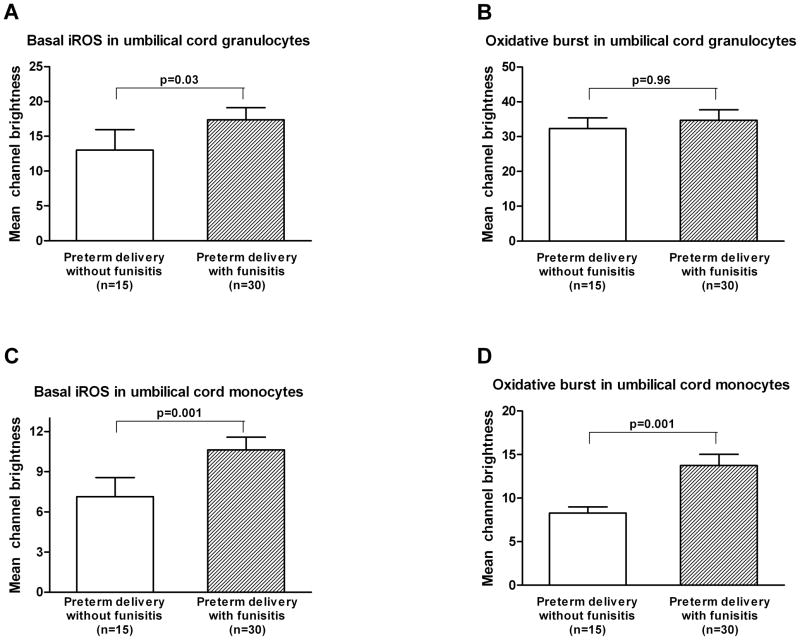Figure 1. Umbilical cord blood: mean channel brightness (mean ± SEM) of basal dichlofluorescein (DCF) activated intracellular reactive oxygen species (iROS) and DCF after stimulation (oxidative burst) in granulocytes and monocytes.
A and B) There was no difference in basal iROS production and oxidative burst in the umbilical cord granulocytes between the control and funisitis groups (mean ± SEM: 13.0 ± 2.9 vs. 17.4 ± 1.7; p=0.03, and 32.3 ± 3.1 vs. 34.7 ± 3.0; p=0.96, respectively). C and D) The basal iROS production and oxidative burst were significantly increased in the umbilical cord monocytes of the funisitis group compared to those of the control group (the control group vs. the funisitis group; mean ± SEM: 7.1 ± 1.4 vs. 10.6 ± 1.0; p=0.001, and 8.3 ± 0.7 vs. 13.8 ± 1.3; p=0.001, respectively).

